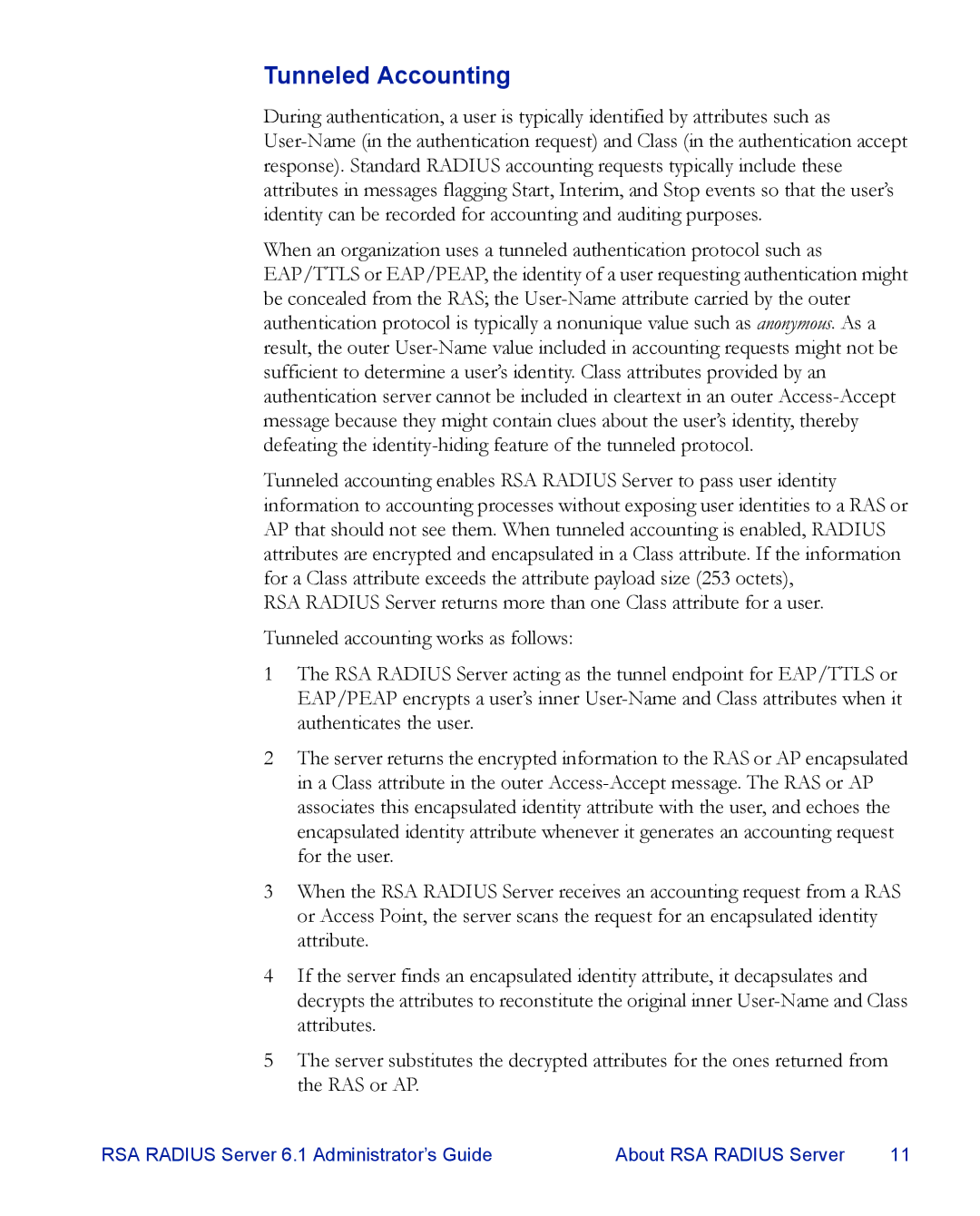Tunneled Accounting
During authentication, a user is typically identified by attributes such as
When an organization uses a tunneled authentication protocol such as EAP/TTLS or EAP/PEAP, the identity of a user requesting authentication might be concealed from the RAS; the
Tunneled accounting enables RSA RADIUS Server to pass user identity information to accounting processes without exposing user identities to a RAS or AP that should not see them. When tunneled accounting is enabled, RADIUS attributes are encrypted and encapsulated in a Class attribute. If the information for a Class attribute exceeds the attribute payload size (253 octets),
RSA RADIUS Server returns more than one Class attribute for a user.
Tunneled accounting works as follows:
1The RSA RADIUS Server acting as the tunnel endpoint for EAP/TTLS or EAP/PEAP encrypts a user’s inner
2The server returns the encrypted information to the RAS or AP encapsulated in a Class attribute in the outer
3When the RSA RADIUS Server receives an accounting request from a RAS or Access Point, the server scans the request for an encapsulated identity attribute.
4If the server finds an encapsulated identity attribute, it decapsulates and decrypts the attributes to reconstitute the original inner
5The server substitutes the decrypted attributes for the ones returned from the RAS or AP.
RSA RADIUS Server 6.1 Administrator’s Guide | About RSA RADIUS Server | 11 |
